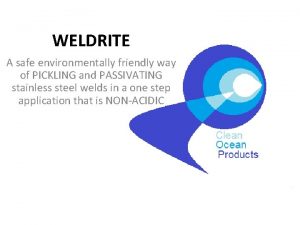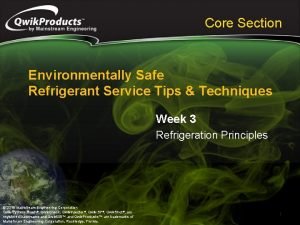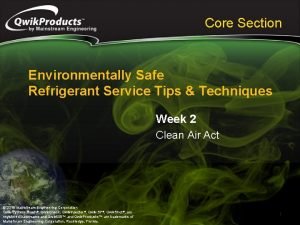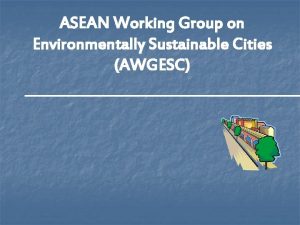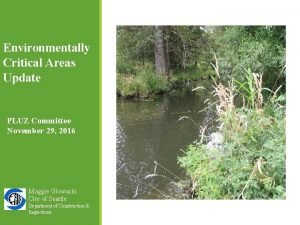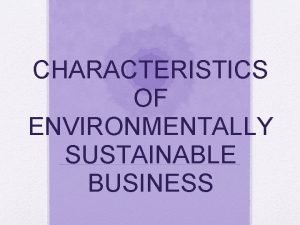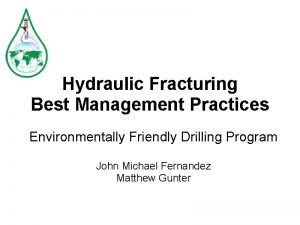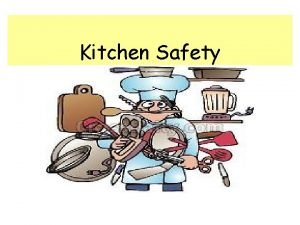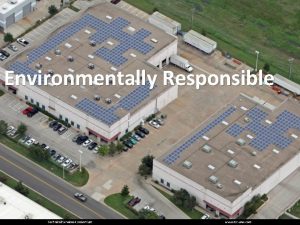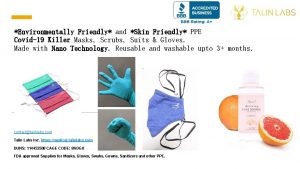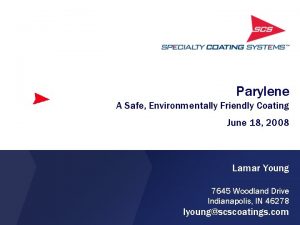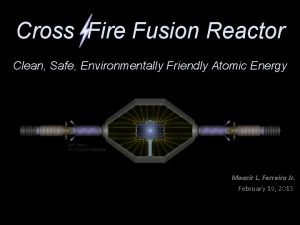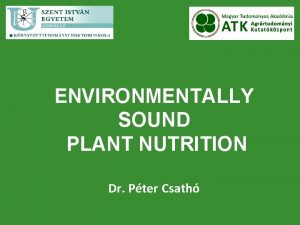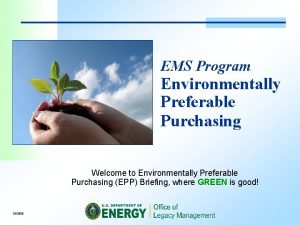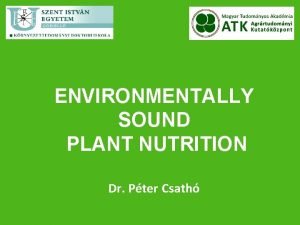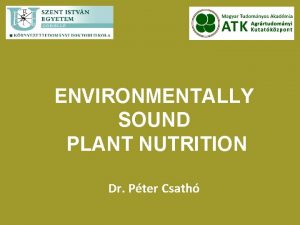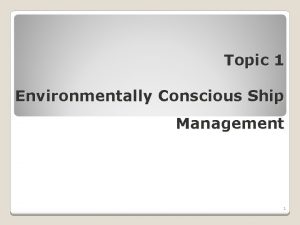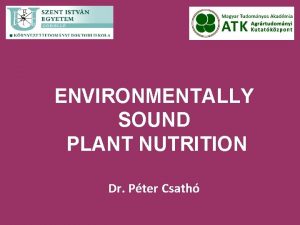WELDRITE A safe environmentally friendly way of PICKLING












- Slides: 12

WELDRITE A safe environmentally friendly way of PICKLING and PASSIVATING stainless steel welds in a one step application that is NON-ACIDIC

Weldrite Pickling and Passivating spray SUPPLIED BY CLEAN OCEAN PRODUCTS SA

Curing metals Most welders understand the terms pickling and passivating. These two processes are usually treated with two separate acidic chemicals. They understand too that these are two, time consuming and dangerous processes that employ the use of highly corrosive acids. However, what if you could do this in one simple environmentally friendly process without putting your staff in any danger? It gets better, Weldrite not only pickles and passivates in one application, it does so without any damage to the substrate. It is applied directly onto newly welded stainless steel.


APPLICATION INSTRUCTIONS Weldrite utilizes unique chemistry technology to achieve an excellent outcome for the user. Weldrite is supplied either in a Liquid or a Gel version to provide you with the optimum application for your requirements Weldrite is NOT a marine or environmental pollutant. It is a safe alternative to hydrochloric acid and other corrosive cleaners. For Use On: Stainless Steel welds (Gel version sprayed or brushed on). For vertical / horizontal and interior / exterior surfaces Weldrite is not an acid and can therefore be applied in situ as overspray does not present any environmental problems

WHAT IS TIG WELDING? The TIG (or Tungsten Inert Gas) welding process uses a non-consumable tungsten electrode which passes the current to the welding arc. This Tungsten Inert Gas Welding process is also known as Gas Tungsten Arc Welding or by the acronym GTAW. The tungsten and other hot materials are protected by the inert gas which creates a cooling effect. The TIG welding process was first started in 1931 and was used during the Second World War

While the aerospace industry is one of the primary users of gas tungsten arc welding, the process is used in a number of other areas. Many industries use GTAW for welding thin workpieces, especially nonferrous metals. It is used extensively in the manufacture of space vehicles, and is also frequently employed to weld small-diameter, thinwall tubing such as those used in the bicycle industry. In addition, GTAW is often used to make root or first-pass welds for piping of various sizes. In maintenance and repair work, the process is commonly used to repair tools and dies, especially components made of aluminum and magnesium. Because the weld metal is not transferred directly across the electric arc like most open arc welding processes, a vast assortment of welding filler metal is available to the welding engineer. In fact, no other welding process permits the welding of so many alloys in so many product configurations. Filler metal alloys, such as elemental aluminum and chromium, can be lost through the electric arc from volatilization. This loss does not occur with the GTAW process. Because the resulting welds have the same chemical integrity as the original base metal or match the base metals more closely, GTAW welds are highly resistant to corrosion and cracking over long time periods, making GTAW the welding procedure of choice for critical operations like sealing spent nuclear fuel canisters before burial. Around the world, structures made out of stainless steel have been TIG welded. TIG welding or GTAW welding is very complex and cannot be done by an ordinary worker, making these structures works of art. Welding stainless steel can be tricky because it is very good at retaining heat, and this can lead to problems such as warping, embrittlement, and rust. In fact, as little as five amps can make the difference between the perfect weld and a blued or burnt-through part


Benefits Clean Ocean Products is proud to bring you more efficiency and convenience in your welding process Our Weldrite that Pickles AND Passivates in ONE STEP will make an excellent contribution to your welding procedure. Now you can offer your clients: Removal of impurities that are left from the metal being manufactured Improved Appearance and Finish More Uniform Resistance to Corrosion Cleaner Final Products Protection for the metal from pollutants getting into the metal causing rusting and damage in the future A metal surface that is smooth with no imperfections Weldrite Provides an Increase in the durability of the metals Weldrite is less hazardous than traditional acids. Protective equipment is still recommended in the handling of our product Weld Healer will help your bottom line: Less Worker Compensation claims Increased productivity Reduced Environmental impact

Pickling and Passivating PICKLING AND PASSIVATION Stainless steel can corrode in service if there is contamination of the surface. Pickling and passivation are two forms of chemical metal finishing that provide protective properties to the metal especially against rust. In other words, pickling and passivation are the names of the two processes where the metal is submerged in a bathing liquid that removes imperfections and rust from the surface of metal. Both pickling and passivation metal finishing offer great advantages for metal products. Removes impurities that are left from the metal being manufactured Protects the metal from pollutants getting into the metal causing rusting and damage in the future Leaves the surface of the metals smooth and with no imperfections Pickling uses acids that take off the surface of the metal to treat impurities at a sublevel basis. Pickling leaves a greater change to the metal. Increases the durability of the metals Though there doesn’t seem to be much difference between the two processes, it comes down to the intensity of the individual treatments. Passivation uses either nitric or citric acid; neither is recognized as being as aggressive as the acids used in pickling Passivation does not typically go below the surface of the metal and does not change the properties of the metal. The oxide layer left by passivation is only. 0000001 inch thick. To put that into perspective it is 1/100, 000 as thick as a human hair

Properties Weldrite utilizes unique chemistry technology to achieve an excellent outcome for the user. Non Hazardous Non Toxic Fully Bio Degradable No HAP / TAP (Hazardous or Toxic Air Pollutants) No VOC (Volatile Organic Compounds) Will not etch substrate or make it brittle Suitable for use in sensitive environments Weldrite is NOT a marine or environmental pollutant. It is a safe alternative to hydrochloric acid and other corrosive cleaners.

Application Methods
 Environmentally friendly pickling
Environmentally friendly pickling Psia unit
Psia unit Environmentally safe refrigerant service tips & techniques
Environmentally safe refrigerant service tips & techniques Inlay wax manipulation
Inlay wax manipulation Safe people safe places
Safe people safe places Safe feed safe food
Safe feed safe food Asean working group on environmentally sustainable cities
Asean working group on environmentally sustainable cities What is environmentally critical areas
What is environmentally critical areas Characteristics of environmentally sustainable business
Characteristics of environmentally sustainable business Environmentally sound drilling practices
Environmentally sound drilling practices What is the safe way to uncover a hot pan on the range?
What is the safe way to uncover a hot pan on the range? Walk this way talk this way
Walk this way talk this way Two way anova
Two way anova
